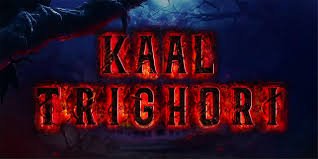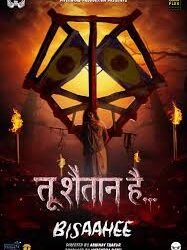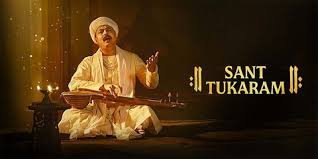
EARLY LIFE :
Harbhajan Singh was born on 3 July 1980 in Jalandhar, Punjab.
Harbhajan Singh was born into a Sikh family. He is the only son of Sardar Sardev Singh Plaha, a Sikh Freedom Fighter who owned a ball bearing and valve factory. Growing up with five sisters, Harbhajan was in line to inherit the family business, but his father insisted that he concentrate on his cricket career and represent India.
CAREER :
Harbhajan broke into the Punjab Under-16s at 15 years and 4 months in November of the 1995–96 season and took 7/46 and 5/138 on debut against Haryana, setting up a nine-wicket win. He scored 56 in his next match against Delhi and then took 11/79 in his third match against Himachal Pradesh, orchestrating an innings win. He ended with 32 wickets at 15.15 and 96 runs at 48.00 in four matches. He was rewarded with selection for North Zone Under-16s, a team representing all of northern India for a one-day series, in which he took two wickets at 43.50 in four matches and scored 18 runs. At the end of the season, he was called into the national Under-19 team at the age of 15 years and 9 months for a youth One Day International against South Africa. He took 1/19 from seven overs in an Indian win.
In 1996–97, Harbhajan was promoted to the Punjab Under-19s, and he took 15 wickets at 20.20 in three matches, although he managed only two runs with the bat. This included match figures of 8/54 in an innings win over Jammu and Kashmir.
Harbhajan made his first-class cricket debut in late 1997 against Services during the 1997–98 Ranji Trophy season. He took a total of 3/35 in an innings win but was dropped back to the Under-19s the following week. He then took 5/75 and 7/44 in two matches to earn a recall to the senior team. He then took a total of 7/123 in the next two matches for Punjab to earn selection for North Zone in the Duleep Trophy.
Harbhajan’s season was interrupted when he represented India at the Under-19 World Cup in January 1998. He played in six matches, taking eight wickets at 24.75 with a best of 3/5 against Kenya.
Returning to India, he played in three more Ranji Trophy matches, and from a total of six matches, he took 18 wickets at an average of 22.50, ranking outside the top 20 in wicket-taking.[28] He took 5/131 as North lost to East Zone by five wickets.
Harbhajan played the entire 2009 Indian Premier League season in South Africa, taking 12 wickets at 21.33 and an economy rate of 5.81 in 13 matches. He was one of the most economical bowlers in the competition and took 1/9 in four overs against Punjab to win the man of the match award. He ended the season with a 4/17 against Delhi, but it was not enough to prevent a four-wicket defeat.
During the 2010 IPL season, he finished as the Mumbai Indian’s leading wicket-taker with 17 victims at an average of 22.17, helping his team to reach the final. Harbhajan opened the bowling during the final vs. Chennai Super Kings but went wicketless and was promoted as a pinch hitter to number 4 in the batting order but could only contribute 1 run in the defeat.
Harbhajan had a largely successful 2011 IPL as part of an effective Mumbai Indians bowling attack. He took 5 for 18 against Chennai Super Kings during the round-robin part of the tournament, which is the best bowling figure of any player at the Wankhede Stadium in the IPL. However, the team’s form faltered during the playoffs as they lost back-to-back matches to Kolkata Knight Riders and Chennai Super Kings to miss out on the final.
After injuries, he returned to competitive cricket to lead the Mumbai Indians to the 2011 Champions League Twenty20 title but fell out of favor with the national selectors. He was not chosen for the home series squad against England in October and West Indies in November and December. Mumbai Indians won their first-ever championship under his captaincy, winning the Champions League by 31 runs. Harbhajan was the man of the match for his contribution.
He went to play in the IPL 2012, which was not that successful for him, but he took his team to the semi-final while being captain. Harbhajan went to play for Essex in England but was not selected for the Sri Lankan tour before the 2012 ICC World Twenty20. In his debut match for Essex against Gloucestershire, Harbhajan did not take any wickets on 12 July 2012, conceding 33 runs in his 12 overs. He was bought by Chennai Super Kings in 2018 after 10 years with Mumbai Indians. On 20 January 2021, Harbajan announced his contract ended with Chennai Super Kings.[35] Kolkata Knight Riders signed him during the 2021 IPL auction for 2 crores.
Despite the superior statistics of other bowlers in domestic cricket, Harbhajan was selected for the Indian Board President’s XI to play the touring Australian cricket team ahead of the Tests. He managed only 1/127 and was ignored for the first two Tests before being selected to make his Test debut in the Third Test against Australia in Bangalore, where he scored 4 not out and a duck and recorded the modest match figures of 2/136 as Australia won the match by eight wickets. He was subsequently overlooked for the triangular ODI tournament in India that followed the Tests involving Zimbabwe and Australia. Still, He was selected for all group matches in the triangular tournament that followed soon after in Sharjah, where he made his ODI debut against New Zealand. He took 1/32 from ten overs on debut as India narrowly won by 15 runs. He then took 3/41 in the next match, a defeat against Australia, but then struggled in the second qualifying match against the same team, taking 1/63 in eight overs. He was subsequently dropped for the final against Australia, which India won, and ended the series with five wickets at 33.20 at an economy rate of 4.36.
Harbhajan had a mixed tournament at the 2003 Cricket World Cup, taking 11 wickets at 30.45 with an economy rate of 3.92 in ten matches. He was the first-choice spinner and played in all matches but one, being dropped for the victory against arch-rivals Pakistan in the group phase. His counterpart, Kumble, played in only three matches. Harbhajan was steady throughout the tournament, never taking more than two wickets in a match and never conceding more than 42 runs from his quota of ten overs, except in the two matches against Australia, who went through the tournament without defeat. Harbhajan was the second-highest score in the group match, with a counter-attacking 28 as India collapsed for 125. Still, when it was his turn to bowl, the Australians attacked him and scored 49 runs from his 44 balls without losing a wicket in a decisive nine-wicket win. In the final, Ganguly elected to field, and Harbhajan was the only Indian bowler to take a wicket, taking 2/49 from eight overs.
In contrast, the Australians scored 7.38 runs per over from the other bowlers to reach 2/359, the highest total in a World Cup final, and win by 125 runs. He was the fourth leading wicket-taker for India overall, and his tournament bowling average was worse than those of Zaheer Khan, Ashish Nehra, and Javagal Srinath. He finished the season with six wickets at 14.00 at 3.65 runs per over in three matches in an ODI tournament in Bangladesh, where he was fined for abusing an umpire.
PERSONAL LIFE :
In 2015, he finally declared his 1st innings to Geeta Basra at a big Punjabi wedding. Geeta is also a renowned Bollywood actress and a British-born Indian who has appeared in Bollywood and Punjabi films. She was born to Indian Punjabi Sikh parents in Portsmouth, Hampshire, on the south coast of England.












